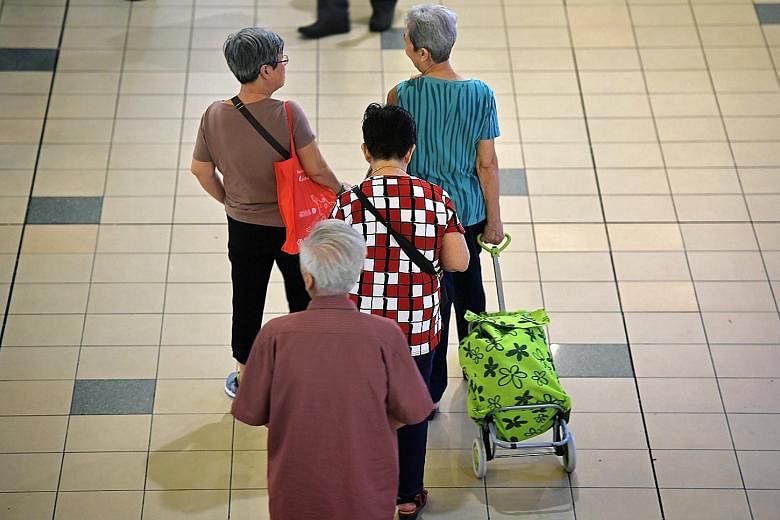The year 2021 gets off to a bleak start for housewife Auntie May and her husband Joe, who has dementia.
The couple, both 75, have long depleted their Medisave funds. The costs of employing foreign domestic workers have skyrocketed, following severe clamps on manpower outflows from source countries.
General practitioners in neighbourhood clinics are untrained in handling dementia. The only option seems to be a nursing home, an idea the couple are repelled by. Joe soon turns to thoughts of assisted suicide.
But in this gloomy scenario - one of four on how Singapore might deal with its ageing population - the Institute of Policy Studies (IPS) predicts an upbeat ending.
When a desperate Auntie May confides in her neighbours, she discovers that they face the same problems, and they rally together to come up with solutions. By 2022, they have formed a cooperative that taps its members' different skills and pools resources to care for sickly seniors in their estate.
Longevity was one of the key themes at IPS' scenario-planning exercise, which threw up several strategies to help Singapore handle its ageing population.
These include introducing a time-banking system for volunteer caregivers, called Eldersave. The scheme would reward caregivers with credits that can be used when they themselves need care in future.
While Singaporeans are living longer, they are also having fewer children, who are the traditional caregivers.
IPS senior research fellow Christopher Gee said: "It's that whole idea of being able to 'pay it forward'. The time spent caregiving is societally valuable, but it is not being recognised at this point."
Chipping away age-based workplace barriers was another strategy that participants in the scenario-planning exercise hoped to see play out in the future. Ideas included internships for those aged 50 and above, and an Ageless Scorecard to grade companies on how inclusive they are to workers of all ages.
The final strategy was end-of-life planning - something Mr Gee feels has not been discussed enough.
He said: "It's the end point that will define how we live our lives. And if we get that right... it will relieve and help our caregivers. It will help society."
An End-Of-Life Toolkit could be given to people to tell them about their care options, and the practical and emotional issues involved. An End-Of-Life Office could spearhead conversations and efforts.
A "whole-of-society" effort is needed, with voluntary welfare organisations, employers, caregivers, the community and the Government working together.
It was an idea that appealed to architect John Ting, who participated in the exercise. He raised the example of a nursing home in the Netherlands, where students can stay in vacant rooms there in exchange for 30 hours of volunteer work a month, spent interacting with elderly residents.
"This conversation really calls for society to come in, instead of leaving the Government to do everything, and society (just sitting around going) 'oh my goodness, oh my goodness'," he said to laughter from the other participants.


